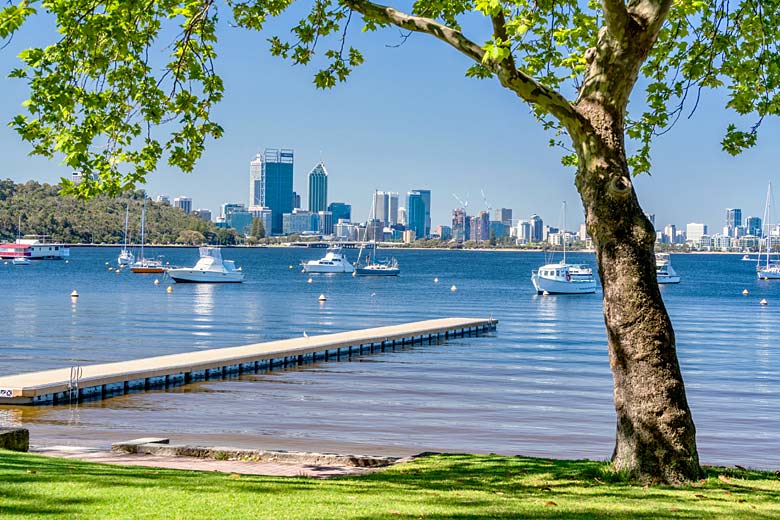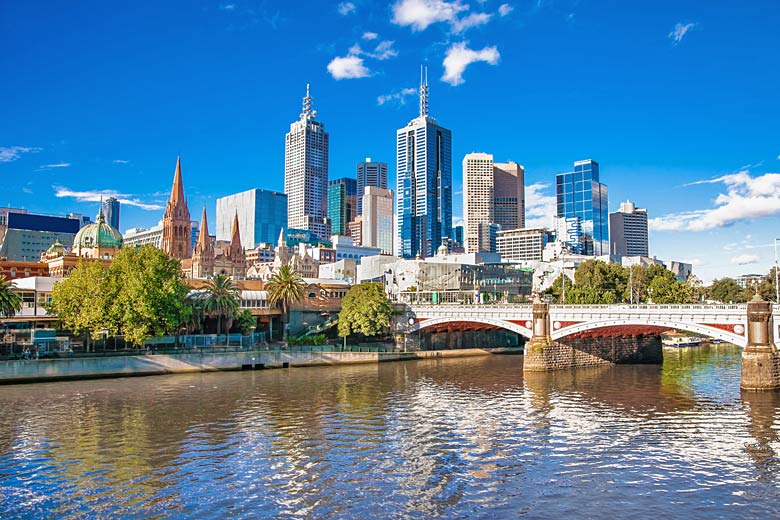- Search for top holiday deals for popular destinations
- Filter deals by board basis, star rating, price & more
- Pay low deposits from £25 per person
Australia weather by month
Check out Australia weather averages by month. Compare detailed monthly climate statistics including temperature, rainfall and sunshine figures.
| Jan | Feb | Mar | Apr | May | Jun | Jul | Aug | Sep | Oct | Nov | Dec | |
|---|---|---|---|---|---|---|---|---|---|---|---|---|
| Maximum daytime temperature °F |  79 79 |
 79 79 |
 77 77 |
 73 73 |
 68 68 |
 64 64 |
 63 63 |
 64 64 |
 68 68 |
 72 72 |
 75 75 |
 79 79 |
| Hours of sunshine (daily) | ||||||||||||
| Days with some rainfall |  12 12 |
 12 12 |
 13 13 |
 11 11 |
 11 11 |
 11 11 |
 8 8 |
 10 10 |
 10 10 |
 11 11 |
 12 12 |
 10 10 |
| Sea temperature °F |  72 72 |
 73 73 |
 73 73 |
 72 72 |
 68 68 |
 66 66 |
 64 64 |
 63 63 |
 64 64 |
 64 64 |
 66 66 |
 70 70 |
More about Australia
Australia by month
Jan Feb Mar Apr May Jun Jul Aug Sep Oct Nov Dec
Recommended for Australia
The climate guide for Australia (Sydney) shows long term monthly weather averages processed from data supplied by CRU (University of East Anglia), the Met Office & the Netherlands Meteorological Institute. Find out more about our data sources.
Top Australia destinations
Below are average maximum temperatures at popular countries, regions and places in Australia for next month - May. Select a destination to see the climate guide for all months of the year.
Australia regions
All Australia regions
- A.C.T.
- New South Wales
- Northern Territory
- Queensland
- South Australia
- Tasmania
- Victoria
- Western Australia
All Australia destinations
- Adelaide, South Australia
- Airlie Beach, Queensland
- Albany, Western Australia
- Albury, New South Wales
- Alice Springs, Northern Territory
- Apollo Bay, Victoria
- Ballarat, Victoria
- Batemans Bay, New South Wales
- Bendigo, Victoria
- Birdsville, Queensland
- Bourke, New South Wales
- Brisbane, Queensland
- Broken Hill, New South Wales
- Broome, Western Australia
- Byron Bay, New South Wales
- Cairns, Queensland
- Canberra, A.C.T.
- Ceduna, South Australia
- Charleville, Queensland
- Clifton Hills, South Australia
- Cobar, New South Wales
- Coffs Harbour, New South Wales
- Coober Pedy, South Australia
- Cooma, New South Wales
- Currie, Tasmania
- Daly Waters, Northern Territory
- Darwin, Northern Territory
- Dubbo, New South Wales
- Esperance, Western Australia
- Eucla, Western Australia
- Exmouth, Western Australia
- Fraser Island, Queensland
- Geelong, Victoria
- Genoa, Victoria
- Geraldton, Western Australia
- Giles, Western Australia
- Gold Coast, Queensland
- Halls Creek, Western Australia
- Hamilton Island, Queensland
- Hay, New South Wales
- Hobart, Tasmania
- Jabiru, Northern Territory
- Kalgoorlie, Western Australia
- Karumba, Queensland
- Katherine, Northern Territory
- Katoomba, New South Wales
- Kununurra, Western Australia
- Lakes Entrance, Victoria
- Launceston, Tasmania
- Leigh Creek, South Australia
- Lizard Island, Queensland
- Lockhart River, Queensland
- Longreach, Queensland
- Lord Howe Island, New South Wales
- Margaret River, Western Australia
- Melbourne, Victoria
- Mildura, Victoria
- Monkey Mia, Western Australia
- Moree, New South Wales
- Mount Gambier, South Australia
- Mount Isa, Queensland
- Noosa, Queensland
- Omeo, Victoria
- Palm Cove, Queensland
- Paraburdoo, Western Australia
- Perth, Western Australia
- Port Augusta, South Australia
- Port Douglas, Queensland
- Port Fairy, Victoria
- Port Hedland, Western Australia
- Port Lincoln, South Australia
- Strahan, Tasmania
- Sunshine Coast, Queensland
- Swan Hill, Victoria
- Sydney, New South Wales
- Tamworth, New South Wales
- Tennant Creek, Northern Territory
- Thursday Island, Queensland
- Tibooburra, New South Wales
- Tidal River, Victoria
- Townsville, Queensland
- Uluru, Northern Territory
- Wagga Wagga, New South Wales
- Wangaratta, Victoria
- Weipa, Queensland
- Whitemark, Tasmania
Metric (°C) | Imperial (°F)
Australia climate overview
This vast country which is only slightly smaller than the United States lies between the Pacific and the Indian Ocean. Its laid-back and multicultural society lives mainly in cosmopolitan cities; in the north of the country Aboriginal settlements still also exist.
The interior is desert, punctuated with rocky plains. While Uluru (Ayers Rock) is the most famous outcrop, there are many beautiful rocky canyons and gorges. Very hot and dry summers support only scrub vegetation in the 'Outback'.
The far north has a distinct summer rainy season. Heavy thunderstorms fill raging rivers and waterfalls while supporting lush vegetation, including dense tropical rainforest.
The Great Dividing Range is a string of low craggy mountains at the eastern end of the desert that act as a natural barrier to the hot desert air and shield the main population centres in the southeast. The major cities of Canberra, Sydney, and Melbourne in the south-eastern corner have rainfall distributed throughout the year, with warm or hot summers and cool or comfortable winter temperatures.
To the west of the desert is another line of low mountains, which run down to the Indian Ocean. This coast experiences dry and hot summers, tempered by cool sea breezes, while winters are cooler and wetter. The northwest coast is particularly prone to tropical cyclones.
Australia's enormous coastline is varied, ranging from spectacular cliffs in the south, to beautiful sandy surf beaches in Queensland; offshore the Great Barrier Reef forms numerous coral islands and tropical lagoons.
Off the southeast coast is the mountainous island of Tasmania, the coolest part of Australia with the highest number of rainy days per year of any part of the country.
Agriculture is restricted to the country's coastal fringes with huge wheat fields and grazing pastures. Sugarcane plantations are prevalent in the north, while extensive vineyards clad the southeast and the green southwestern tip.
More about Australia
Compare Australia with the UK
Below the Australia chart shows average maximum daytime temperature for Australia (Sydney) and the UK (London).
Maximum daytime temperature (°F)
Metric (°C) | Imperial (°F)
Compare more Australia weather >>
Be inspired
Get your weekly fix of holiday inspiration from some of the world's best travel writers plus save on your next trip with the latest exclusive offers
We promise not to share your details
Related posts
Popular travel offers
Explore holidays in the sun for less
- Beach holidays
- Family holidays
- City breaks
- Summer holidays
- Winter sun holidays
- Holiday offers
- Top travel brands
- Airlines & flights
- Discount hotels
- Airport parking deals
- TUI
- Jet2holidays
- easyJet holidays
- Love Holidays
- January sales
Airport parking
- Manchester Airport
- Stansted Airport
- Bristol Airport
- Luton Airport
- Birmingham Airport
- Edinburgh Airport
- Gatwick Airport
- Glasgow Airport
- Newcastle Airport
Airport lounges
- Manchester Airport
- Birmingham Airport
- Bristol Airport
- Edinburgh Airport
- Glasgow Airport
- Heathrow Airport
- Newcastle Airport
- Stansted Airport
- Gatwick Airport



















